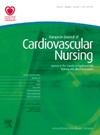A generic logic model for physical activity interventions for the cardiac population using intervention mapping
IF 3.9
3区 医学
Q2 CARDIAC & CARDIOVASCULAR SYSTEMS
引用次数: 0
Abstract
Introduction Regular physical activity is important in the secondary prevention of cardiovascular disease. But many cardiac patients have difficulty establishing lifelong physical activity habits, even after completion of an exercise-based cardiac rehabilitation programme. There is a need for effective interventions to support cardiac patients' physical activity. Such interventions are often complex behaviour change interventions whose design should be grounded in programme theory, i.e., a description of how the intervention is expected to lead to its effects and under what conditions. A logic model is often used to communicate programme theory [1]. Purpose The purpose of this work was to describe a generic logic model for behaviour change interventions to increase and maintain physical activity among patients who have had an acute cardiac event. Methods We applied the Intervention Mapping approach [2] to develop a generic logic model that is both data- and theory-driven, i.e. informed by research evidence and behaviour change theory. The at-risk behaviour for the individual cardiac patient was defined as "insufficient independent long-term maintenance of heart-healthy physical activity", compounded by the environmental factor "lack of support provision for long-term independent physical activity" from the healthcare providers and people in the patient’s interpersonal environment. We defined performance objectives by asking the questions: "What do people who had an acute cardiac event need to do to increase and maintain their heart-healthy physical activity?" and "What do the healthcare providers and people in the patient’s interpersonal environment need to do to encourage and support the patient in being physically active?" The performance objectives specify what actions are required of the individuals targeted in the intervention. We selected determinants corresponding to performance objectives based on empirical evidence from systematic reviews and based on behaviour change theory such as the Reasoned Action Approach (RAA) and the Health Action Process Approach (HAPA). Results Central elements of the logic model are presented in table 1. The logic model includes 18 performance objectives and 13 determinants, supported by empirical evidence from 40 scientific publications. Conclusion The generic logic model serves as a collection of current knowledge regarding increasing and maintaining physical activity among the cardiac population and can be used for a number of purposes: as a foundation for developing new interventions; as a blueprint against which to compare and/or solidify the programme theory of existing interventions; as a conceptual framework for designing evaluations of interventions; as a current evidence map from which to identify research gaps; and as a point of reference for reflecting on one’s own health behaviour.Table 1.Elements of the logic model.利用干预映射为心脏病患者制定体育锻炼干预措施的通用逻辑模型
导言 定期进行体育锻炼对于心血管疾病的二级预防非常重要。但是,许多心脏病患者即使在完成以运动为基础的心脏康复计划后,也很难建立终身体育锻炼的习惯。因此需要采取有效的干预措施来支持心脏病患者的体育锻炼。此类干预措施通常是复杂的行为改变干预措施,其设计应以方案理论为基础,即描述干预措施预计如何产生效果以及在何种条件下产生效果。逻辑模型通常用于传播计划理论[1]。目的 本研究的目的是描述一种通用逻辑模型,用于对急性心脏病患者进行行为改变干预,以增加并保持体育锻炼。方法 我们采用干预映射法[2]开发了一个通用逻辑模型,该模型由数据和理论驱动,即参考了研究证据和行为改变理论。心脏病患者的高危行为被定义为 "不能独立地长期保持有益于心脏健康的体育锻炼",再加上来自医疗服务提供者和患者人际环境中的 "缺乏对长期独立体育锻炼的支持 "这一环境因素。我们通过提出以下问题来确定绩效目标:"发生过急性心脏事件的人需要做些什么来增加和保持有益于心脏健康的体力活动?"以及 "医疗服务提供者和患者人际环境中的人需要做些什么来鼓励和支持患者进行体力活动?"绩效目标明确了干预措施所针对的个人需要采取的行动。我们根据系统综述中的经验证据以及行为改变理论(如合理行动方法 (RAA) 和健康行动过程方法 (HAPA))选择了与绩效目标相对应的决定因素。结果 逻辑模型的核心要素见表 1。逻辑模型包括 18 个绩效目标和 13 个决定因素,并有 40 份科学出版物提供的实证支持。结论 通用逻辑模型汇集了当前有关增加和保持心脏病患者体育锻炼的知识,可用于多种目的:作为制定新干预措施的基础;作为比较和/或巩固现有干预措施方案理论的蓝图;作为设计干预措施评估的概念框架;作为当前的证据图,从中找出研究差距;以及作为反思自身健康行为的参照点。
本文章由计算机程序翻译,如有差异,请以英文原文为准。
求助全文
约1分钟内获得全文
求助全文
来源期刊

European Journal of Cardiovascular Nursing
CARDIAC & CARDIOVASCULAR SYSTEMS-NURSING
CiteScore
5.10
自引率
10.30%
发文量
247
审稿时长
6-12 weeks
期刊介绍:
The peer-reviewed journal of the European Society of Cardiology’s Council on Cardiovascular Nursing and Allied Professions (CCNAP) covering the broad field of cardiovascular nursing including chronic and acute care, cardiac rehabilitation, primary and secondary prevention, heart failure, acute coronary syndromes, interventional cardiology, cardiac care, and vascular nursing.
 求助内容:
求助内容: 应助结果提醒方式:
应助结果提醒方式:


